How Bangalore became the Silicon Valley of India
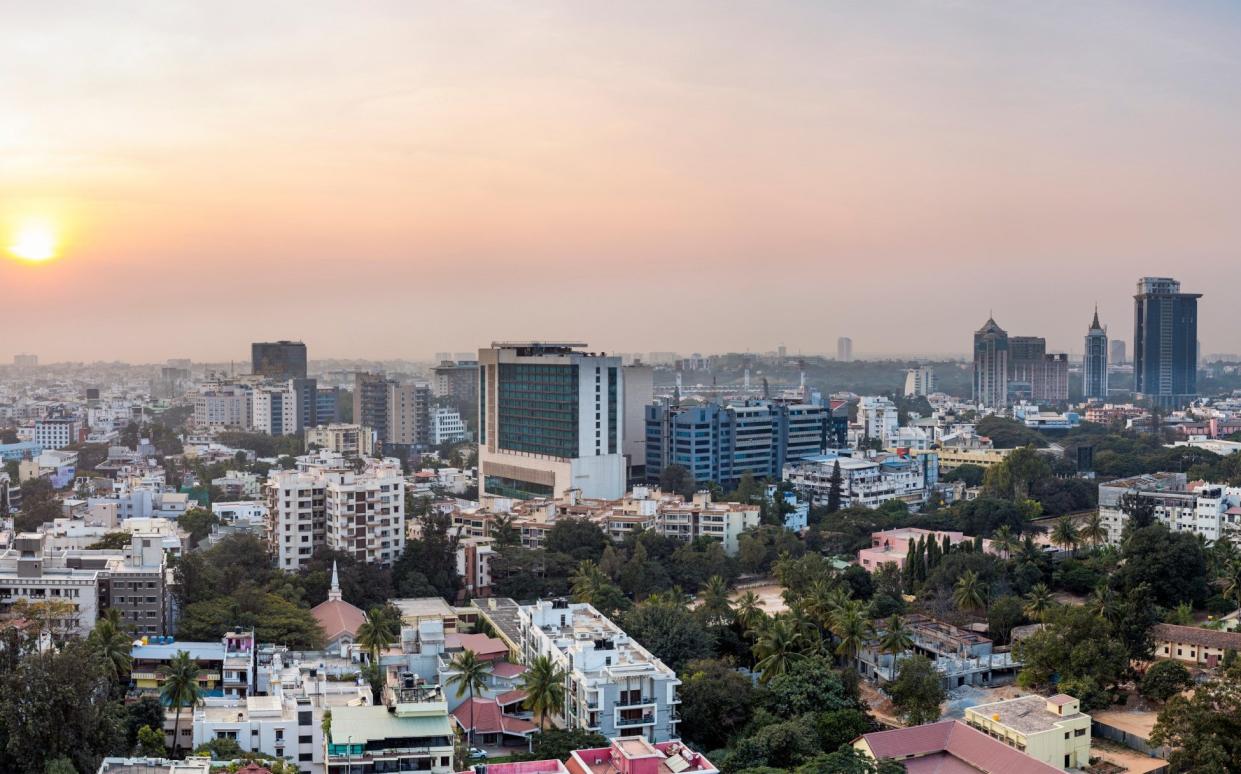
Sitting under the ceiling fans in Koshy’s Restaurant, a fixture in this city since 1952, it felt as though nothing had changed. White-uniformed waiters with silver buttons on their tunics attended to elderly customers in pressed shirts.
Even the items on the menu seemed like artefacts from a different era – cream of vegetable soup, pineapple steak and onions, glazed mutton. They harked back to the years after Indian independence, when Queen Elizabeth and Jawaharlal Nehru visited Koshy’s – at least according to the menu – and Bangalore was a leafy, temperate city of 750,000 people, loved in particular by middle-class retirees.
I first came to Koshy’s in 2006. By then, Bangalore was the centre of an extraordinary economic boom that was transforming India. The city had swollen to six million people, drawn by its expanding IT industry.
I was working on a screenplay – finished, but never produced – set in one of the city’s call centres. It struck me as an extraordinary moment. An old India, sluggish, bureaucratic, poor, conservative, religious, was being modernised at incredible speed.
In 2006 I visited a charity school which educated children from Bangalore’s slums. One classroom was full of the children of snake-charmers – really a form of pest control in India. The snake-charmers were all unemployed because the vast amount of construction in the city had scared the snakes away. Every child in the class wanted to become a software engineer.
I went to inbound call centres where young employees were studying the movies Notting Hill and Bridget Jones’s Diary to tune their ears to British accents. They might spend their days in a traditional Hindu home where arranged marriage was the norm, but at night they answered phones under assumed western names, trying to assist callers whose lifestyles were totally alien to them.
The training they got included lessons on British culture. I jotted these words of wisdom down from one of the so-called soft-skilled trainers I met then: “The Brits take a lot of time to open up. They’re very commanding. Once they get irate they can’t calm down. They don’t like Americans, or even if you mention America.”
The gleaming, air-conditioned campuses where the young employees worked seemed like evidence that India was changing irrevocably. Coming back 18 years later, I wondered if I would recognise anything.
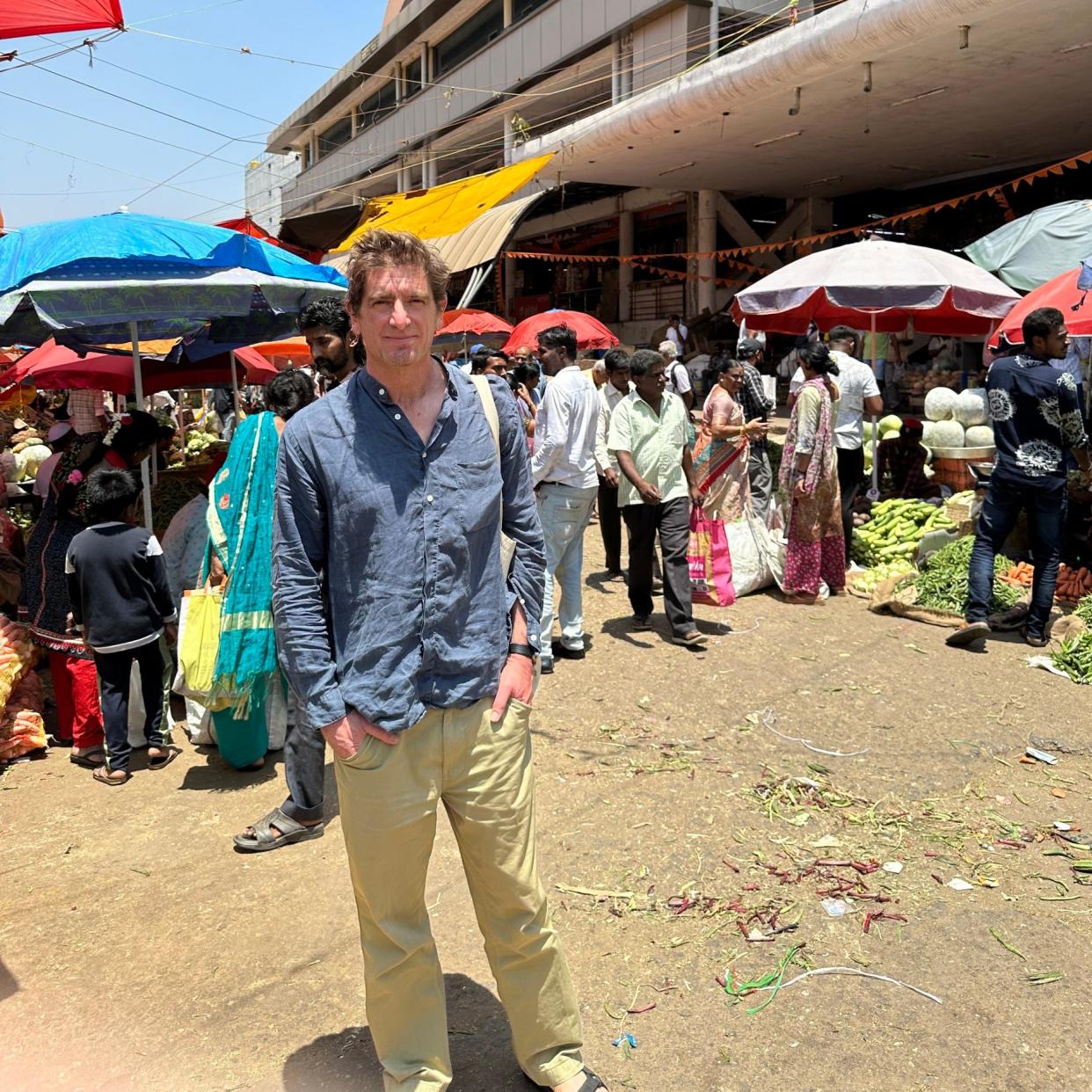
First of all, it’s no longer Bangalore. The old name has been retired – not completely, people still default to it in conversation – but Bengaluru is the official one. It’s now a megalopolis of at least 13 million people. It has a new metro system. And the new airport, opened last year, is an architectural masterpiece. Billed as an airport in a garden, it’s full of living walls, plants and giant hanging baskets.
I had flown in on one of Virgin Atlantic’s inaugural direct flights from Heathrow. These daily flights, which link up with onward routes to San Francisco and beyond, are further evidence of the city’s economic clout.
Arriving at night, driving from the airport on the elevated highway to my hotel, I didn’t see a single autorickshaw. In the distance, there was a row of shiny tower-blocks and a new luxury shopping centre – the Phoenix Mall of Asia – that wouldn’t look out of place in Dubai. We were headed to the Leela Palace Hotel, a five-star Indo-Saracenic behemoth built on the edge of the city.
Although it looks like a palace, the Leela is not in fact much older than Bengaluru’s economic boom. Opened in 2001, it’s vast and opulent, with an army of solicitous staff, a spa, a pool – and even a Tokyo-themed speakeasy in the basement which is said to be the sixth best bar in India. I can’t comment on that, because I was turned away for wearing flip-flops.
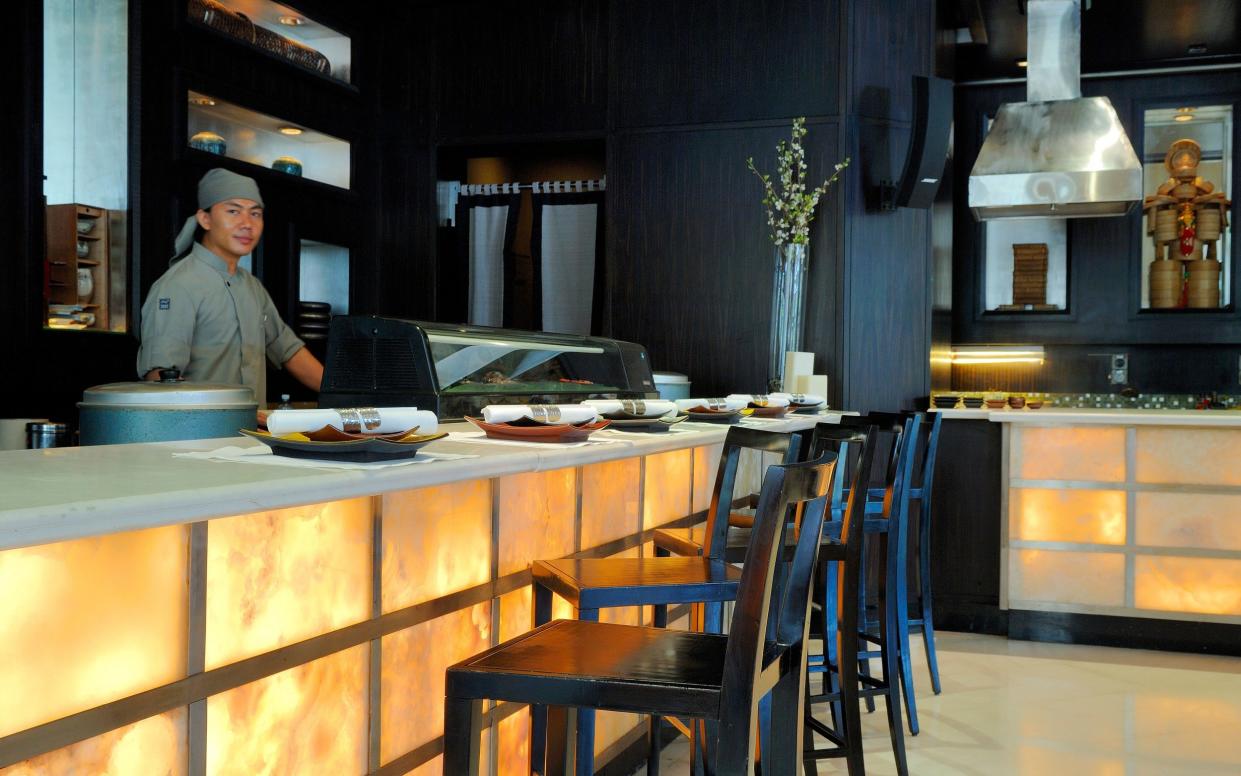
Flip flops, however, were no obstacle to my enjoying a club sandwich and a non-alcoholic cocktail in the Library Bar – named for its library of rare spirits – under an enormous alabaster light-fitting as big as my car.
It was the Leela Palace Hotel that in 2009 hosted the wedding reception of our current Prime Minister, Rishi Sunak and his bride Akshata Murthy. I rather wish I’d had my wedding reception at the Leela Palace. Unfortunately, my in-laws didn’t have such deep pockets as Mr Sunak’s.
Ms Murthy is the daughter of NR Narayana Murthy, one of the superstars of Bengaluru’s software boom – a multibillionaire businessman who co-founded the tech company Infosys.
It’s hard to overstate the impact of the software industry on India. In 2021, India earned more from software exports than Saudi Arabia did from exporting oil: $178 billion dollars. Thanks in large part to India’s tech industry, an economy that was for decades regarded as a basket case is now the fifth largest in the world.
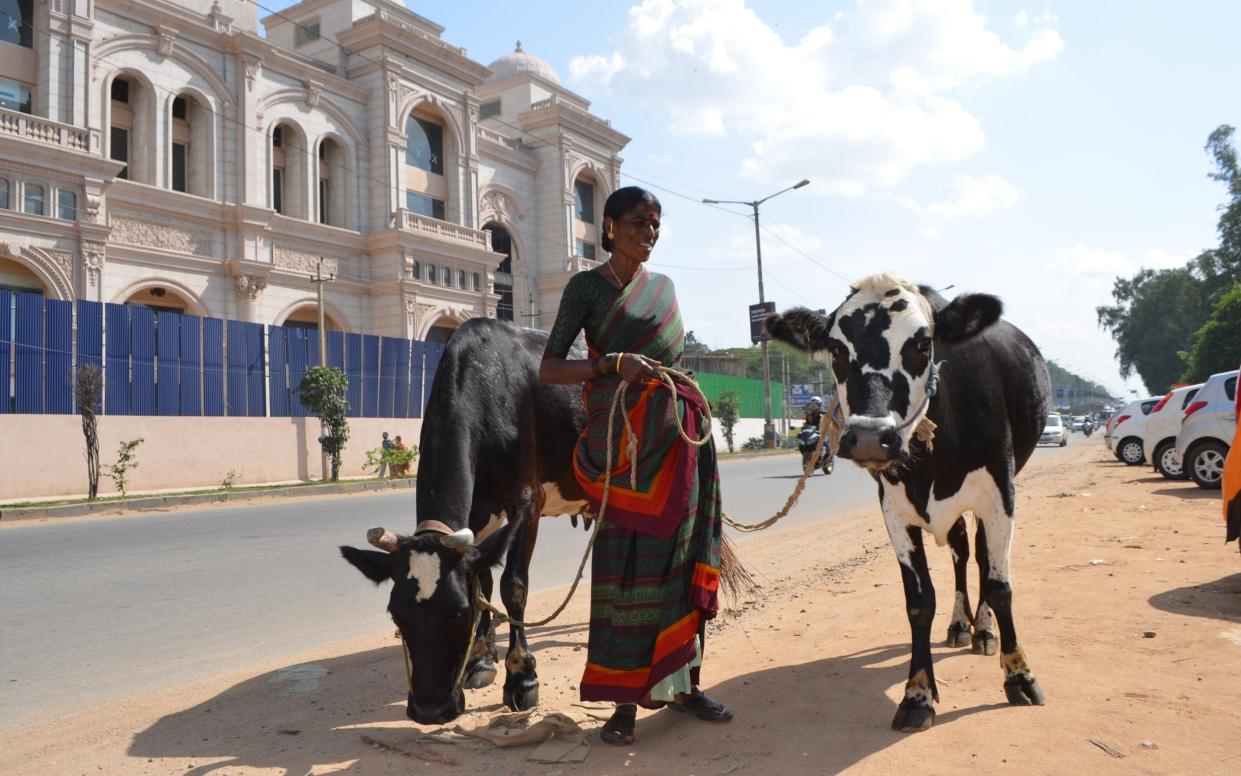
By the time I ventured out of the hotel, I was expecting to find a subcontinental version of Miami: palm-trees and flyovers, maybe even some bold tech-entrepreneurs commuting to work with jet-packs. Imagine my surprise when I was plunged into a very familiar world of dusty streets, honking autorickshaws, women passengers in shalwar kameez, riding side-saddle on overloaded motorcycles, chai sellers and even cows wandering occasionally through the traffic.
But even this familiar-looking India wasn’t quite the same. I was able to use Uber to hail an autorickshaw. A driver called Naveen took me to Khoshy’s for 86 rupees – less than a pound. It felt in some ways a lot like the old India – just better. There was still the thrill of zooming through the streets, but there was no haggling over the price, no worrying about unexpected side-quests to a relative’s curio shop, and no arguing over whether the notes I was paying with were torn or dirty. Naveen’s rickshaw was one of the newest models, powered by compressed natural gas and running much cleaner than the old diesel ones.
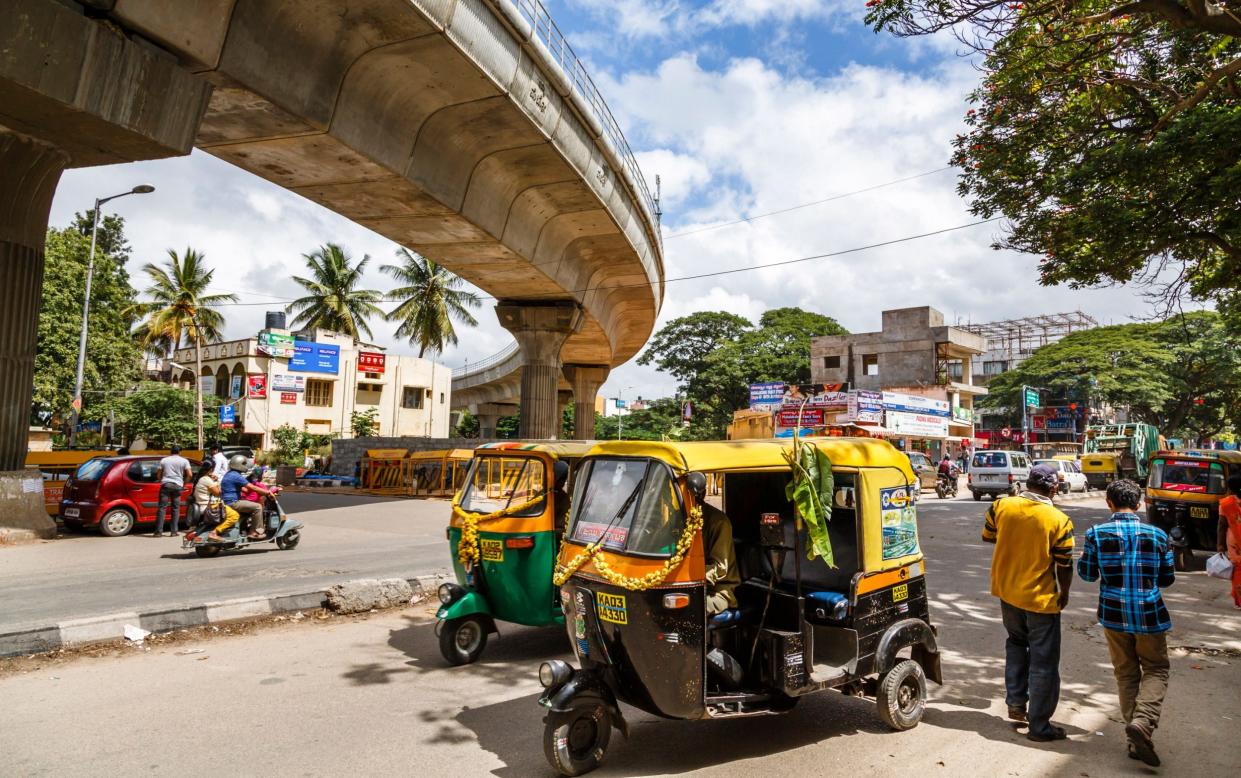
Of course, the huge growth of Bengaluru has brought problems. The traffic is a nightmare. The sleepy charm of the city, the carefully managed greenery that shades the streets, and the municipal water supply are all under strain. But there’s something intoxicating about Bengaluru’s energy and the strange contrasts between the new India and the India that hasn’t changed at all.
On a walking tour of Krishnarajendra Market, I watched a man sitting half-lotus in a cubby-hole painstakingly threading tuberose blossoms onto a string to make garlands. Up the road at the 300 year old Shree Kore Venkataramana Temple, sacred to Vishnu, there was a bare-chested priest performing a holy ritual – and a QR code for electronic donations.
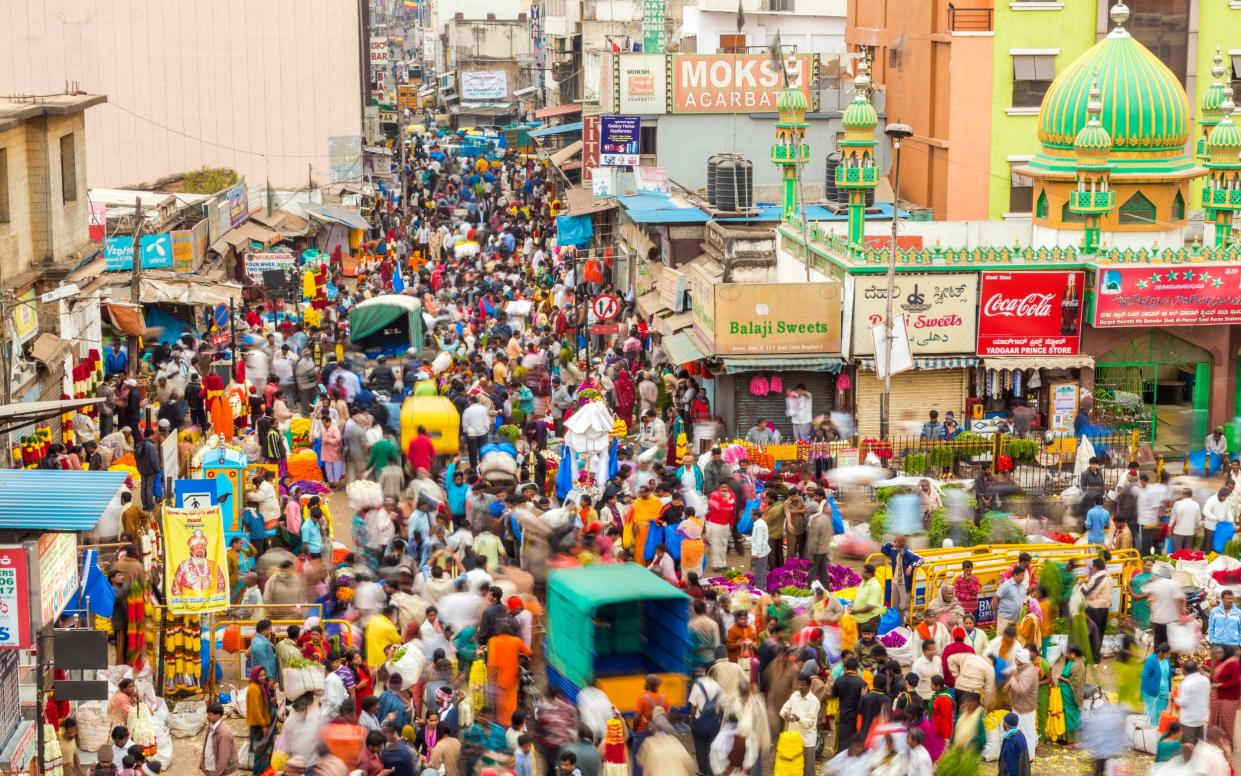
In a microbrewery called Toit, I watched local tech bros sampling the range of craft ales. Up the road from Khoshy’s, a sign outside the Lit gastropub advised me to “Head inside coz it’s gonna be Lit tonight”. I fell in step behind a young man on a phone who was saying loudly: “We’re going to invest more money in this specific sector and rethink our overall approach”. In Lalbagh Botanical Gardens, an oasis of green first laid out in the 18th century with fountains and a glasshouse, there were courting couples, families and Instagrammers posting content for their followers.
Riding the metro – clean, cheap, fast – I fell into conversation with a young entrepreneur called Clinton Baptist. He owed his unusual surname to a Goan ancestor. He was dressed in the uniform of today’s global citizens: jeans, a plaid shirt, sneakers and back-pack, and he carried a business plan in a roll of paper like a treasure map.

Like many new arrivals to the city, he’d been drawn there in the hope of finding start-up capital to launch his business and replicating the success of the founders of Infosys. Clinton’s big idea was to use Artificial Intelligence to transform India’s education system. He talked passionately about AI and how we stood at a historic moment, comparable to the birth of the internet or the Industrial Revolution.
He was on his way to a place where he liked to sit and brainstorm. It turned out to be an independent cafe-bookshop, called Champaca, overlooking a garden. The tables were full of young Bangaloreans working on tablets and laptops. Despite opening just before the pandemic, the bookstore’s founder, Radhika Timbadia, had found a devoted clientele and strong demand for her carefully curated selection of novels and non-fiction books.
Champaca would be an ornament to any neighbourhood. It was calm and, as Clinton had promised, conducive to work and brainstorming. Its youthful customers drank kombucha as they read or chatted or put the finishing touches to business proposals.
Champaca was also a reminder that India is a country of the young. Half of its 1.4 billion population is under 30. And whereas in the past ambitious young citizens had to move abroad to chase their dreams, today’s Bengaluru represents a home-grown promised land.
Essentials
The Leela Palace Hotel Bengaluru (00 91 80 2521 1234; theleela.com) has doubles from £206 per night. Virgin (virginatlantic.com) flies from London Heathrow to Bengaluru from £499 return.


